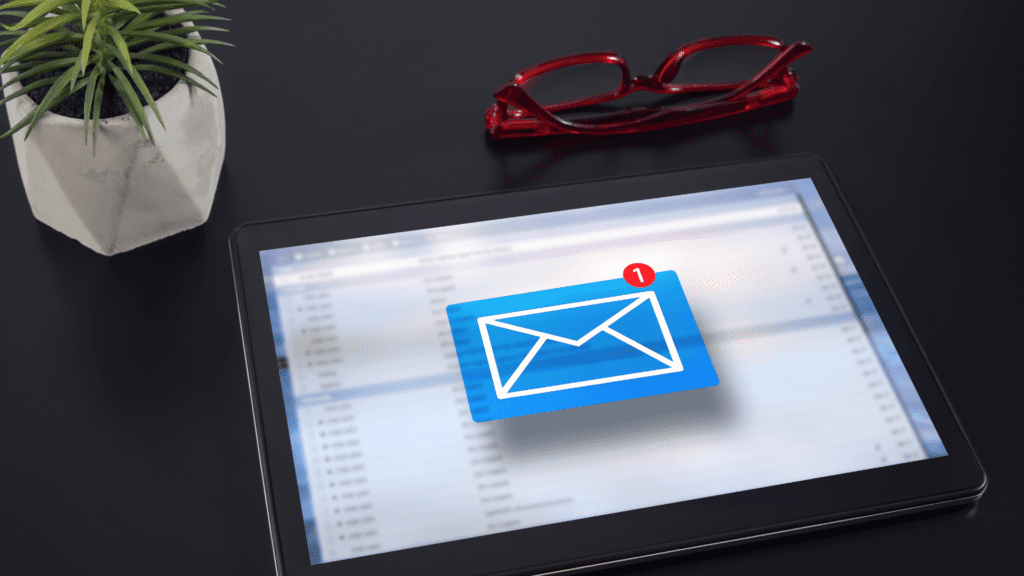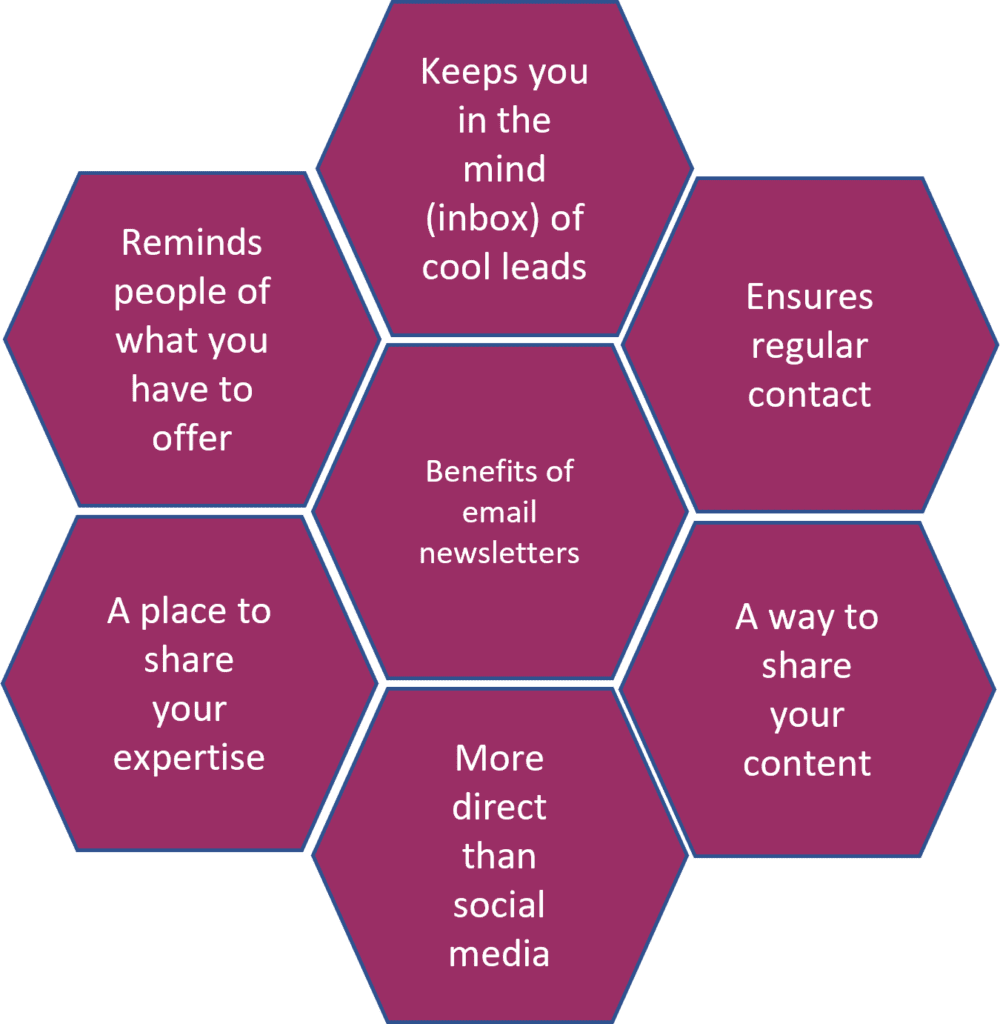
Email ‘newsletters’ – when to use them
Email newsletters are very popular for big businesses – think Gap, Amazon, etc., constantly bombarding your email inbox with very generic emails about their latest sales or products and some sort of ‘personalised’ suggestions about what you might want to buy next. For big brands, they have a purpose but for small businesses are they unwanted and just filling their inboxes…doing more harm than good?
Let’s consider when might be a good time to use them in your business and, if so, some ideas for the content.
Consider if a newsletter style email is right for your business
The first thing to say, is if you have a mailing list it does not mean you have to send out a regular ‘newsletter’…capture everything in one go….for everyone on your list… type email. I truly believe in the value of every email address of my subscribers, and where possible treating them as individuals (or at least smaller segments).
I do send a regular mailing – why? Because I write two blogs every month and also create a video tip and I want my subscribers to have easy access to these via their inboxes. My open rates suggest they find these valuable. However, if you don’t have regular content to share, then don’t feel pressured to send such regular emails.
Importantly, don’t feel you have to send ‘all emails to all subscribers’. A mailing list is more powerful if you segment it and work out what you need to send to groups of individuals (or even actual individuals) instead. An email platform or CRM can send really sophisticated personal emails for all forms of onboarding, follow up, check-in, etc.
See the companion blog – Readable Emails
When an email newsletter is right for you…
If you decide a newsletter is the right thing for your business….still remember that you can send slightly different versions to different segments.
A newsletter is good place to highlight what you have been up to, your latest offers or new products, and perhaps a competition launch. It can drive people back to your website, social media, latest blog post, specific product or service pages, etc. It’s often an important part of your interconnected content marketing strategy.
A newsletter, arriving in a client’s inbox, reminds them you are there. It can help build loyalty and with a well-written, informative newsletter you can really stand out from the competition.
As mentioned above, consider what you can include and how often you can commit to sending one out. Regularity is key when it comes to being more ‘general’, even if that is only quarterly…or possibly even an ‘annual round up’, if that feels most appropriate.
Remember not to spam! You must have permission to use any clients’ email for marketing and make it very clear how to unsubscribe.
Benefits of an email newsletter

There are lots of reasons to send a regular mailing. They are a great way to stay in touch with customers and clients, past and present….as well as those subscribers who have not bought from you (yet!).
The key benefits include:
- Keeps you in the mind (inbox) of cool leads – you know those people who want to buy but haven’t quite converted yet! We’ve all done it, where we keep thinking, “must get in touch” or “must order that” – sometimes that general email can be the one the is the perfectly timed reminder.
- Ensures regular contact – if you subscribe to a mailing list, whilst you don’t want you inbox flooded, it’s nice to hear from the business relatively regularly, especially if they have super helpful content or information to share.
- A way to share your content – I really believe in COPE (create once; promote everywhere)…so when you are producing great content an email newsletter is a wonderful way to tell people about it and make it easily accessible, especially blog posts, podcast episode and videos.
- More direct than social media – We all know the algorithms on social media make it difficult for us to get our content seen. An email, on the other hand, goes direct to an individual’s inbox. Even if they don’t open it, at least they should see it (which is also why your subject line is important).
- A place to share your expertise – I love useful content. I love to learn something…even better if it is right there at the click of a button in an email in a newsletter. Whether it’s through cornerstone content or simply in what you write in your email, it’s a great platform to share your knowledge, expertise, credibility, tips and advice too.
- Reminds people of what you have to offer – We are all guilty of subscribing and then forgetting about a company and what it offers – so don’t be afraid to remind people of exactly what you do and what you offer in your newsletter.
How to write a email newsletter
In my last blog post, I talked about what to consider when writing accessible, engaging and readable emails. Much of the same advice applies…however, when it comes to newsletter, I think a simple structure to adopt can be this:
- Tell them what you are going to say
- Say it
- Tell them what you said.
Let me take you through that step-by-step.
‘Tell them what you are going to say’
I love a newsletter that has a personal introduction telling me what this issue wants to share. It is a bit like an editor’s introduction at the start of a magazine. Keep it short, snappy and engaging – it’s all about hooking those readers. Mention what is in the main body of the email, and perhaps, why. You can even include a short ‘contents list’ (ideally all hyperlinked so the reader can jump to the bits they want to read about or see!)
‘Say it’
So, this is where the main body of your content comes in. I think you need consistency to an extent…in particular, a feature or two…or three! These can include:
- a newsflash
- a new product (or perhaps even ‘pick of the week’ or something similar)
- a new event
- a new workshop
- some top advice
- ‘a spotlight’ on either an employee or technique
- ·introduction to latest blog post(s)
- a video
Don’t forget to use clear headings to draw your subscriber’s eye to key information.
Also include a ‘call to action’ for each feature – these can be buttons or just hyperlinks (using anchor text), that send your newsletter reader off to ‘find out more’, ‘learn more’ or ultimately ‘buy’. You can also encourage engagement by inviting your readers to reply to you or contact you.
‘Tell them what you said’
It kind of depends on the body of the content, but for example, I always suggest a ‘Dates for your diary’ section if you have key dates, events, workshops, etc that you have advertised a few. Even if you have said the dates within the main body of the text, and highlighted them in bold (!), there is no harm in listing these again.
I also think a nice closing summary and sign off can work well – especially for your ‘scan readers’ who just scroll through quickly. Something might just catch their eye at the end that rounds up what you offer and essentially why you have been in touch again.
You can also finish with a a call to action (or two…). To connect on social media, with easy linked icons, or to book a call with you, for example, can work well at the end…a little sign off.
Email newsletters that work
As a final suggestion, please remember to email yourself a preview version – it’s good for a final proofread. Importantly, take a look at it on your laptop, tablet and mobile phone! I once designed a newsletter with lots of lovely little photos – on my laptop these were six photos in a nice row across the page, on my phone it was a good three to four scrolls to get through them! It just didn’t look as effective!
Again, remember the use of images can also be blocked and even alert spam filters, so check your preview and do look in to if you email is being flagged as spam. You may need to invite your subscribers to add you to their ‘safe’ list (another good call to action idea).
Finally, if you have included a link or a download make sure they work.
Want to receive my email newsletter? Subscribe here:
And get my 15 Varieties of Content ebook for free (that’s a lead magnet – have you got one of those? If not, get in touch)